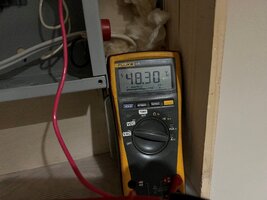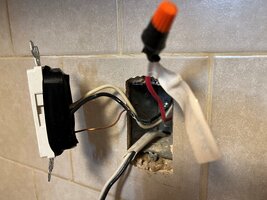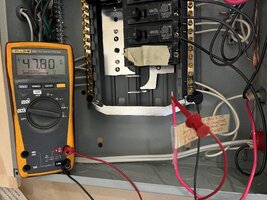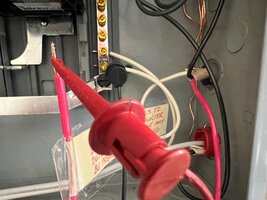Told you I'd come calling ....
Heres one for Mr 1st Vette ..... or anyone else who would know...
So ... I have a 14/3 wire running from a double 15 amp breaker in my new 200 amp panel one of the legs was for a counter outlet the other was for a dishwasher
We are re doing our basement kitchen and eliminating the dishwasher so this extra leg ( red wire ) is no longer needed .
I belled this red wire right from the panel to the outlet and sure enough this is the wire ... only thing is that when I power the black wire ... the red is showing 48 v even though its not connected to anything.
If it was shorted it would show 120ish volts ... where is this 48 volts coming from ?
Heres one for Mr 1st Vette ..... or anyone else who would know...
So ... I have a 14/3 wire running from a double 15 amp breaker in my new 200 amp panel one of the legs was for a counter outlet the other was for a dishwasher
We are re doing our basement kitchen and eliminating the dishwasher so this extra leg ( red wire ) is no longer needed .
I belled this red wire right from the panel to the outlet and sure enough this is the wire ... only thing is that when I power the black wire ... the red is showing 48 v even though its not connected to anything.
If it was shorted it would show 120ish volts ... where is this 48 volts coming from ?





